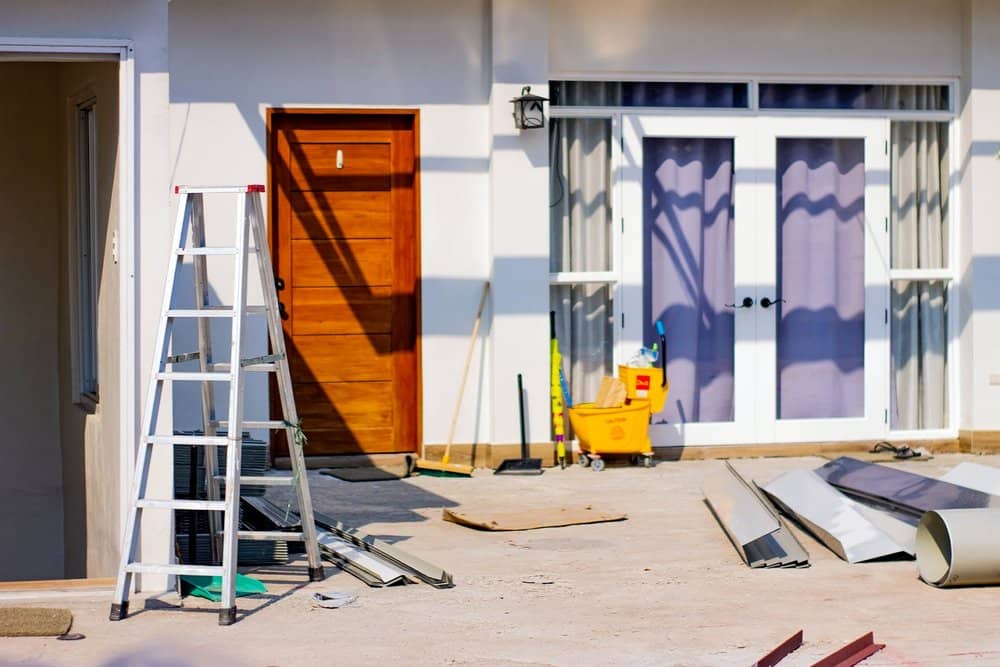
You have just purchased a house and are ready to make the big move. But wait, have you ensured the house is ready for you to move in? Sure, it passed the inspection, and it is technically a “healthy” house.
However, the devil is in the details, and you need to be sure that the place is more than just livable. This is the time to go through the small and big things that may not be your liking.
We will look at 12 home improvement projects to do before moving into a new house. The best thing to do is create a to-do list to identify which jobs will be easier and which will require more elbow grease.
First, home improvement projects need to be categorized into simple and more demanding types. Once you have compiled a list, it will be easier to decide what projects need to be done and when.
The following is an example of the main categories that can go on the list:
1. HVAC system
2. Plumbing
3. Electrical items
4. Walls, floors, and ceilings
5. Outdoor areas
Once you have decided on the main items to deal with, you can break them up into subcategories to do your home improvement project. For example, plumbing work can be as simple as locating the main shutoff valve.
Or you could toss out old plumbing fixtures and replace them with new ones. Obviously, replacing fixtures will be the more complicated of the two.
You could break up the project list into different categories from a safety standpoint. Ask yourself questions such as “What is the electrical situation like?”, “Do the fire alarms need replacement?”, “Is there a tree in the garden that needs trimming to make it safe?” etc.
The following are 12 examples of home improvement projects that can be simple or more complicated.
1. Meet The Neighbors
Now, this one seems a bit of a strange “project” to do. But it is always wise to meet and get to know your neighbors, especially those closest to the house.
When you move into a new location, you may not know what “normal” is and what is suspicious.
Other benefits of talking to neighbors include finding practical things such as good plumbers in the area, which construction company to avoid, and what HOAs expect from residents.
2. Sumps and pumps
If your new home is located in an area that gets heavy rainfall, even for a short period, or tends to flood, the importance of checking the sump pump’s state cannot be overstated.
The easiest way to check and see if it works is to pour water into it. The most common time for sump pumps to fail is the beginning of the rainy season.
This is because they have been sitting idle for several months. You are good to go if the pump starts after you pour water into it.
3.The key to safety
A simple yet important thing to remember is a good hiding place for the house key once you have replaced the locks.
Hiding keys under the flowerpot or the doormat is too obvious. If you don’t have keyless entry, identify an unusual spot, so you don’t get locked out.
4. Alarm bells
Another security item that should make it on the home improvement list are alarms for doors and windows. When it comes to alarms, you have two choices; a simple device that you attach yourself or more sophisticated devices that professionals install.
5. Keeping things cool
First, shut-off the power supply to the unit, clean the condenser fins and cut any plants growing within two feet of the unit. This is also a good time to replace the furnace filter and clean the condensation drain.
6. Leaky houses
Fixing the air-conditioning is the first step, but what if the house leaks cool or warm air?
Air usually leaks out around the doors and windows, and attic areas. It is well worth using professional help since you will save on utility bills.
7. Water supply
You have just moved into your new home, and your pet dog decides to jump in the bathtub, breaking the faucet in the process and filling up the bathtub.
What do you do? The first thing is to shut off the water supply. To do this, you need to find the main shutoff valve. Shutoff valves are usually located in an area that will not freeze, such as the basement.
8. Older homes
If the house you are moving into was built before 1965, it might be worth checking the soil condition near the house. Older homes use heated oil tanks to keep the house warm, sometimes leaking. Therefore, check the tank and soil. As well as this, some older homes may need some replacements such as interior doors, as they are likely to be damaged or worn down.
9. Painting projects
If the house needs a fresh coat of paint, the best time to do it is before moving in. Without furniture around, the workload decreases dramatically. If you are willing, you could even turn it into a DIY project.
10. Popcorn on the ceiling
Many houses built before 1990 contain textured ceilings and walls known as “popcorn ceilings”. Apart from being a blight, they may not be healthy. Removing it is not very difficult, but it may still be worth getting professional help.
11. Baby proof house
If moving in with children, then it is necessary to make the house safe for children. Children in new environments tend to be more curious. Identify where gates need to be installed, where electrical outlets are located and put locks on cabinets.
12. The roof over your head
The roof of the house is an area people tend to forget to inspect closely for leaks. A leaky roof is a nuisance and will allow mold and mildew to accumulate and damage the wood.